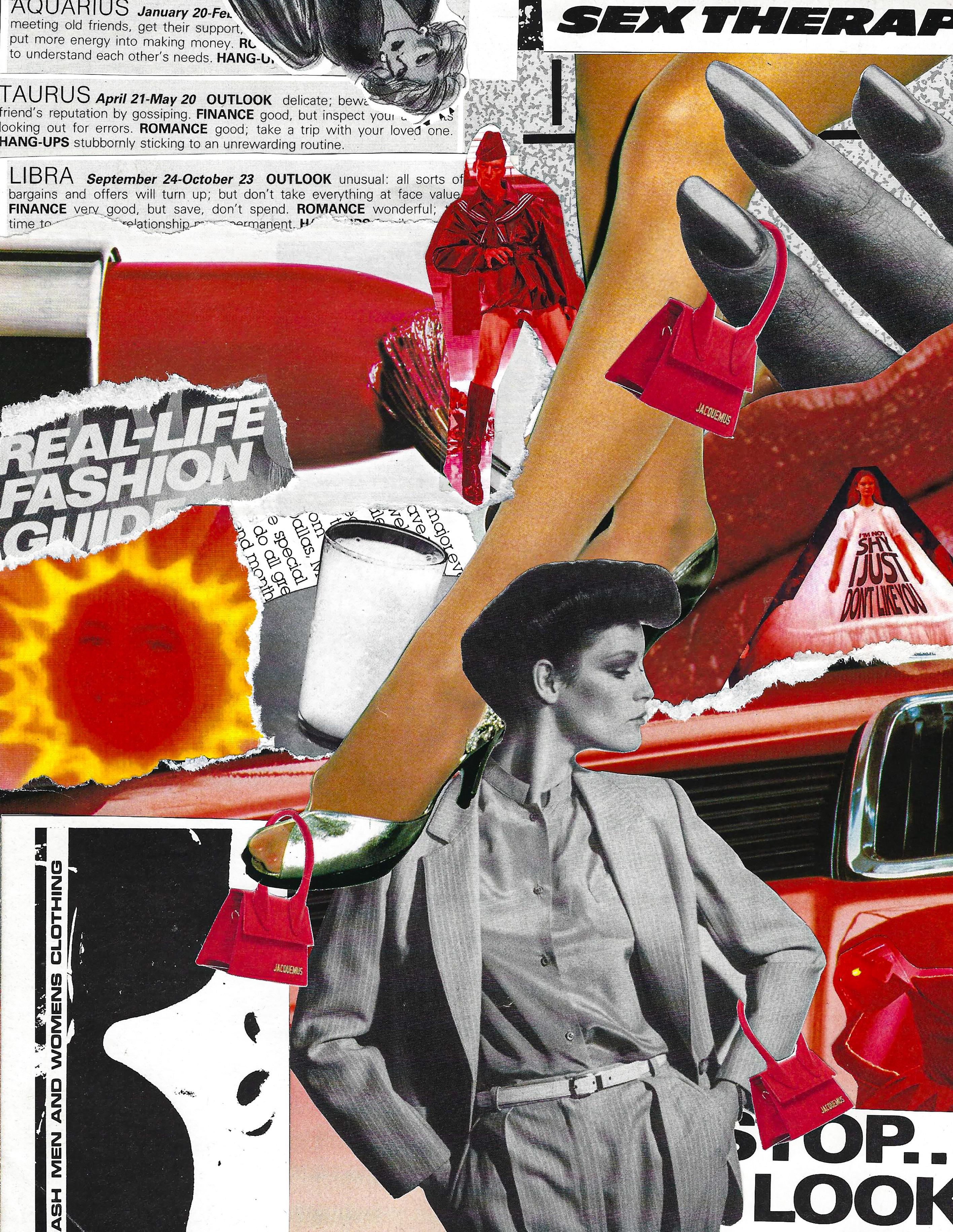
4 minute read
Generation M(eme)
Generation M(eme)
By: Kate Regan Art by Jordan Clewner and Lauren Hurwitz
The shareable media became the hottest internet currency and companies are using it to their advantage.
This past Paris Fashion Week, model Leon Dame staggered down the Maison Margiela runway in a contorted, hunched manner that captured the attention of everyone — on and offline. Dame closed the show in a belted oversized leather jacket, donned with a sailor striped scarf and military-inspired hat. While Margiela is known for their unconventional designs, it was the walk that made an impression.
Within 24 hours, the clip of Dame’s distinct strut was circulating social media with different “relatable” captions attached to it. This high fashion moment quickly took over Twitter with user @ chuuzus comparing Dame to “walking down the halls with headphones in.” As of November, this tweet has been liked by over 120,000 people.
In an instant, the show was shared through social media at an alarming rate. While this wasn’t expected, Dame worked with Creative Director John Galliano and Movement Director Pat Boguslawski to choreograph the walk that would close the show. It appears that Galliano wanted to create a lasting impression and leave the audience wondering. Not only did this bring attention to the brand from an atypical audience, but also introduced Galliano and his creative eye back into mainstream culture, something that hasn’t happened since his heyday at Dior.
In 2019, memes are the quickest form of communication, an internet currency that is rapidly exchanged throughout social media, group chats, Reddit pages, etc. They’re a common ground, one that is universal and available to anyone, anywhere, via the World Wide Web. Whether Kylie Jenner capitalizes on the phrase “rise and shine” and trademarks it as if it was was inventive or Lipton uses the classic picture of Kermit the Frog sipping iced tea, brands are learning that memes are the gateway to viral success
and sequentially, growth in sales.
Enter the Jacquemus Fall/Winter 2019 collection, where Simon Porte Jaquemeus released his “Le Chiquito” bag, priced at $258 and measuring 8.5 by 5 centimeters. While shockingly small, there was no surprise that the internet was quick to react. Memes were immediately created, comparing different things one could fit in a bag that size. People were claiming it could fit “my patience,’’ a JUUL pod, or a single airpod.
Without the attachment of the meme to the mini bag, Jaquemeus would not be the brand it is today. This purse singlehandedly increased Jacquemus’ social media impressions by 1,831%. It only took a few weeks for the style to sell out in multiple colorways and the bag alone has accounted for at least 30% of the brand’s total revenue. Without the comedic, Instagram-able qualities of the purse, Jacquemeus wouldn’t be nearly as popular or successful.
feel more comfortable in their fashion knowledge, these designers are raking in money from demographics that they wouldn’t typically capitalize on.
While Viktor and Rolf are known for creating pieces that are art-driven and beautifully handcrafted, they decided to branch out a bit more for their Fall 2019 show. Instead of their usual handcrafted cut-outs and structured add-ons, they chose to cover their dresses with relatable slogans such as, “I’m not shy, I just don’t like you,” “Sorry I’m late, I didn’t want to come” and even, “Fuck you.” While these pieces were snubbed by fashion critics, they were adored by millions of people online. Dresses printed with the words, “No” or “Get mean” were tweeted alongside relatable thoughts of, “When bae wants to come over” or “When a bitch tries to mess with me.” These collections were highly sought after because, for those who previously couldn’t, they felt as though they could finally relate to high fashion.
While the internet was mocking the ridiculous size of the purse, Jaquemeus was selling out because humor is always marketable and desirable. These purses were selling out because of their viralability. People were inclined to purchase the purse after seeing the attention it received online; some are willing to drop the money on a novelty accessory because it’s viral and will bring attention to themselves. When attention has a $258 price tag, some people consider it a steal.
There is a superiority complex to those who understand the world of high fashion compared to those who don’t. These memes have created a bridge between the Twitterverse and haute couture by not only bringing attention to these luxury brands, but by normalizing the pieces and in turn, increases sales. While everyday people on the internet
With any collection, there will be a paradox between those who love it and those who despise it. It has now been normalized to highlight opinions via social media, as opposed to the traditional critique. Twitter user @cunninqham said what we were all thinking, “Those viktor and Rolf dresses are the worst fucking things I’ve ever seen not just because they are ugly but they are a prime example of people thinking high fashion = clothes that cost a lot. We have all been making fun of forever 21 for doing it but now it’s couturé?” On the other hand, Instyle tweeted, “Viktor & Rolf made couture dresses into memes— and it’s a total mood.” paired with, “The new @Viktor_and_Rolf dresses are peak Aquarius season vibes” from Glamour UK.










